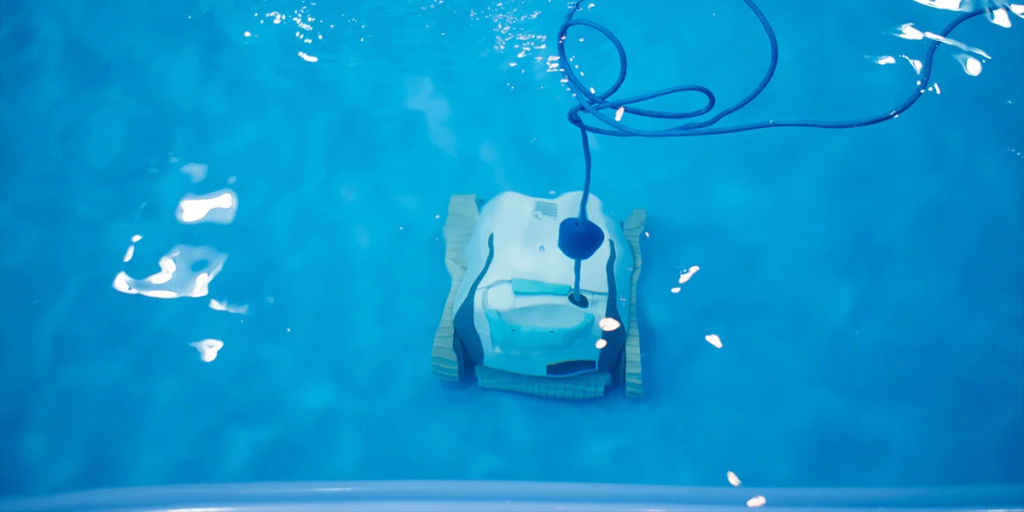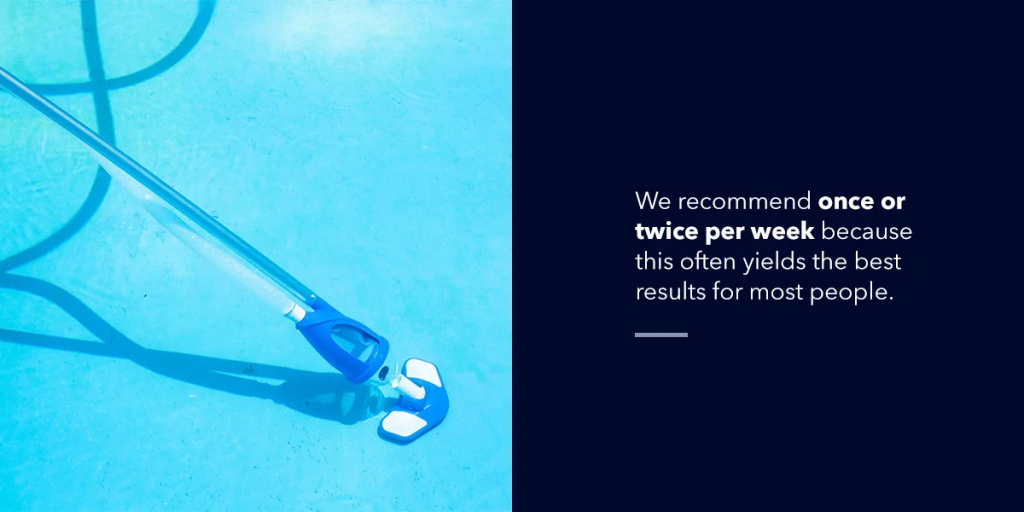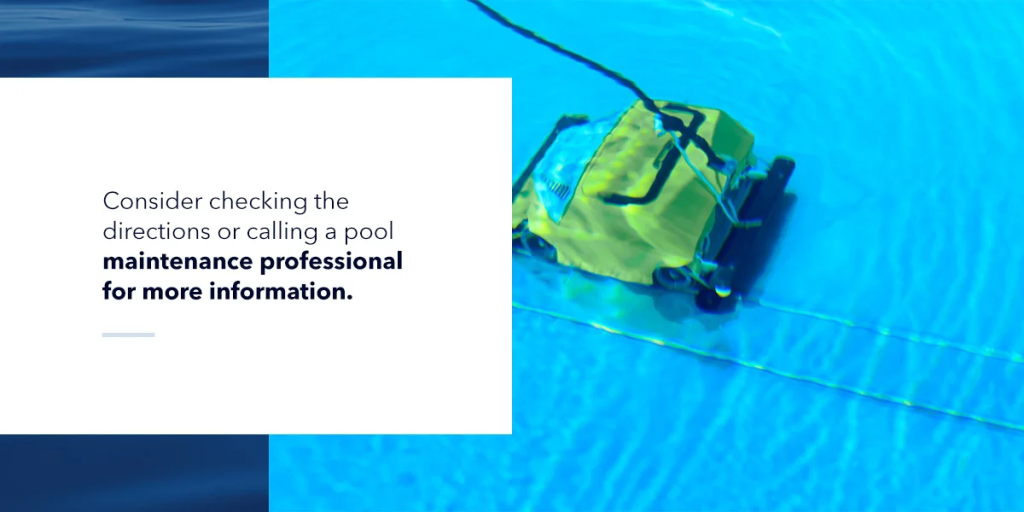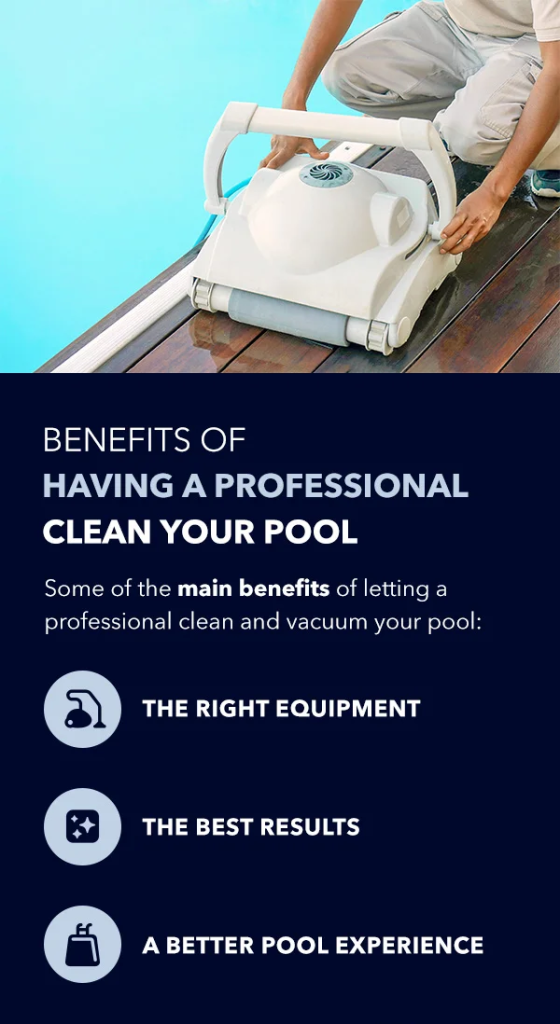

A pool with crystal-clear water that sparkles in the sun is a sight to behold. It’s appealing to the eye, inviting you to enjoy a refreshing swim or throw a weekend pool party with friends and family. But getting your pool to look so inviting takes time and effort.
Pool maintenance is a constant in every pool owner’s life — or at least it should be. Without proper pool maintenance, your water can start getting cloudy and dirty. One of the most important steps of pool care is vacuuming your pool to keep it looking as beautiful as possible.
The reasons you should vacuum your inground pool are the same reasons you vacuum the floors in your home. Daily life puts a toll on your floors as people use them, with crumbs, dirt, mud and other factors becoming common occurrences. If you neglect cleaning up these things, your home’s floors can start looking unattractive, and you may even avoid walking on them. Vacuuming is one of the most fundamental ways to clean your home’s floors using the power of suction.
Think of your inground pool the same way. As people use your pool, more dirt and grime enter the water. This is especially true if bathers are getting in and out of the pool, tracking dirt and other particles into the water regularly. Plus, nature will also find a way to get into your pool’s water, whether it be leaves, twigs, airborne dirt or bugs.
As time goes by, the bottom of your pool will accumulate dirt and scum. And just like neglecting to clean the floors on the inside of your house will result in unattractive walkways, neglecting to clean the floors of your inground pool will lead to a dirty-looking body of water that you will find excuses to avoid swimming in. You likely made a significant investment in your property with your pool, so this is the opposite of what you want to experience.
You want your pool to look inviting and beautiful so you can jump in the moment you’re in the mood for a swim. You want gorgeous, clean water without any unidentified matter resting on the bottom. For this reason, you need to vacuum your inground pool. Pool vacuuming is a crucial step in your overall pool care routine. It helps lay the foundation for all the other pool chores you do to keep your water clean and inviting and your pool ready for your next swim.

When it comes to knowing how to clean your pool with a vacuum, the first thing many people wonder is how often they should vacuum their pool. It’s obvious that vacuuming is an essential part of pool care, but many people are unsure how frequently they should engage in this pool care activity.
We recommend vacuuming your pool at least once per week. Your pool will only look better and stay cleaner if you vacuum your pool more often than this. Aim to vacuum twice a week during pool season, and you’re sure to love the results. Plus, vacuuming more frequently will result in easier vacuuming sessions. You’ll be keeping up with the settling debris rather than putting it off and having a more difficult pool cleaning ahead of you.
Several factors may affect how often you should vacuum your pool. We recommend once or twice per week because this often yields the best results for most people. But you may have to vacuum your pool more often, depending on certain factors. And if you skip vacuuming your pool once in a while, your pool may still be in decent shape, depending on how those same factors affect you and your pool.
Here are some of the main factors that can influence how often you need to vacuum your pool:
Now that you know more about why and when you should vacuum your pool, you should know how long this task will take. After all, if it’s going to become part of your schedule, you need to dedicate the right amount of time so you can get the best results.
You can choose between manual and automatic pool vacuums. Here’s more information about how long it takes to vacuum your pool with both pool vacuum types:
To vacuum your pool property, you need the right tools and accessories. Here are some of the main items you’ll need before vacuuming your pool:
Now it’s time to learn how to use a pool vacuum to keep your pool clean all season long or prepare it for winterization. Here are four steps to learn how to hook a pool vacuum up and more so you can use your pool vacuum to the best of your ability.

The first step of the process must be to assemble your vacuum. Ensure you’ve gathered all the right parts listed above. Once you’ve gathered these, assemble the pieces so you can get to work vacuuming your pool.
Start by attaching the vacuum head to the telescoping pole. You should feel the vacuum head easily snap onto the telescoping pole. If you’re struggling to get the vacuum head on or it feels like there’s something wrong with the connection, there may be an issue. Avoid forcing the head on in these instances, as you could cause damage. Consider checking the directions or calling a pool maintenance professional for more information.
Next, connect one end of the vacuum hose to the vacuum head. Then connect the other end of the vacuum hose to the vacuum plate, which connects to the skimmer inlet. Turn off your pool pump before placing the vacuum plate over the skimmer or skimmer basket.
Before you start vacuuming your pool, you must select the right filter setting on the multiport valve filter of your filter system for the task at hand. You have two filter settings to choose from — filter and waste. Here are the differences between these two settings so you can pick the right one for your needs:
After choosing your filter setting, you’re ready to start vacuuming your pool. Using a pool vacuum is much like vacuuming a household rug or carpet. You’ll use slow, linear passes, moving over every inch of the pool floor. Use slow movements to avoid stirring up the dirt. You’ll have to wait until the dirt settles to try again if this happens.
You may have to pause the process and empty the pump strainer at some point if your pool is particularly dirty. Then resume the process where you left off. Repeat these steps as many times as needed until you achieve satisfactory results.
When you’re done vacuuming your pool, you have a few more steps to take:

Pool cleaning is essential for every pool owner, but professional pool cleaning services are available if you’d rather let someone else handle it for you. Here are some of the main benefits of letting a professional clean and vacuum your pool:
Lotus Pools is ready to be your trusted team of pool care professionals. Our weekly maintenance services ensure your pool stays looking great all season long. We can also handle your inground pool closing needs when winter approaches. And when spring rolls back around, you can count on us to open your pool for the season. Pool owners in Rolling Meadows, Illinois, and the Greater Chicagoland Area trust us for all their pool care needs.
We invite you to schedule a service call today to take the next step toward a healthier, cleaner pool.